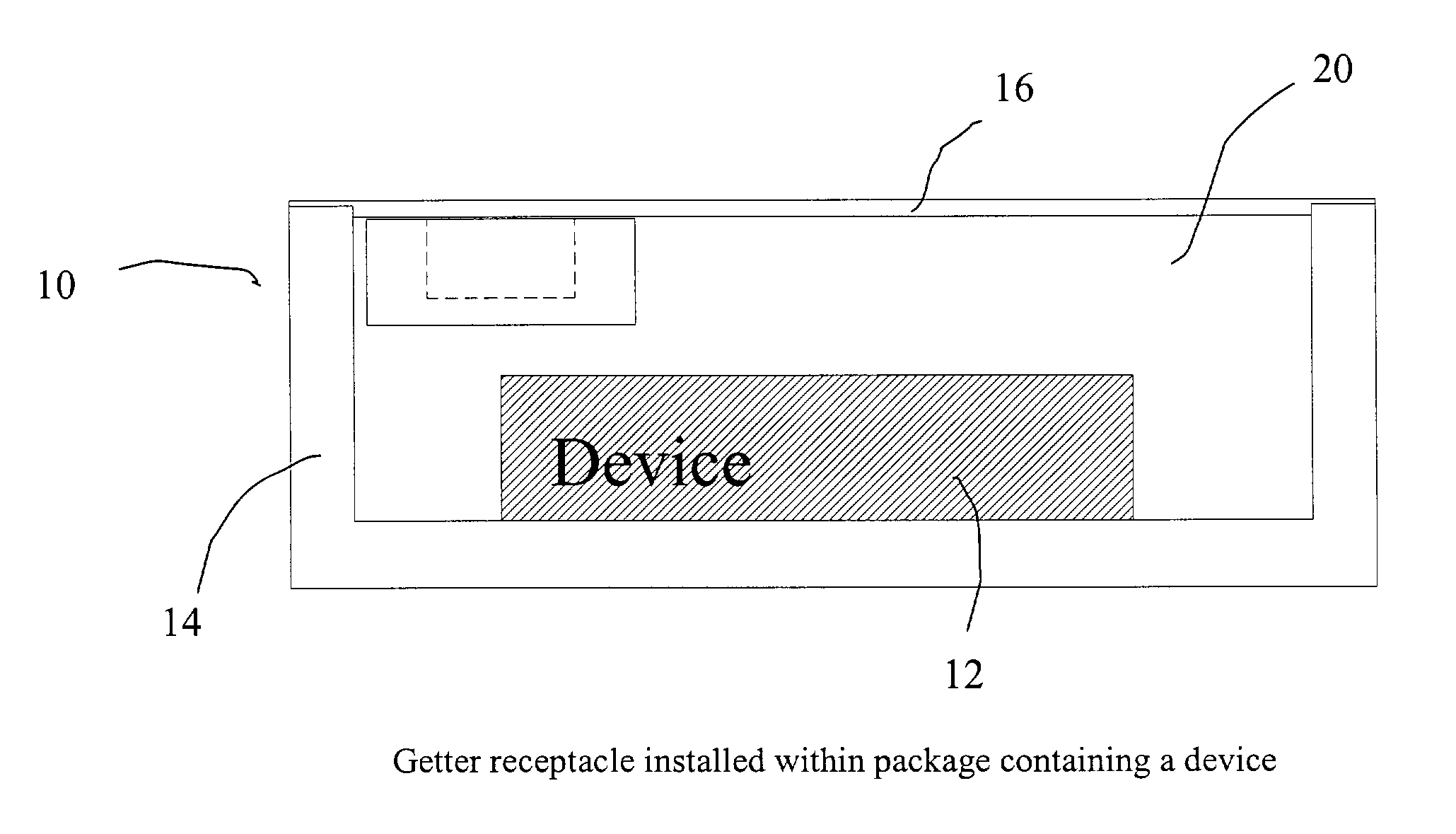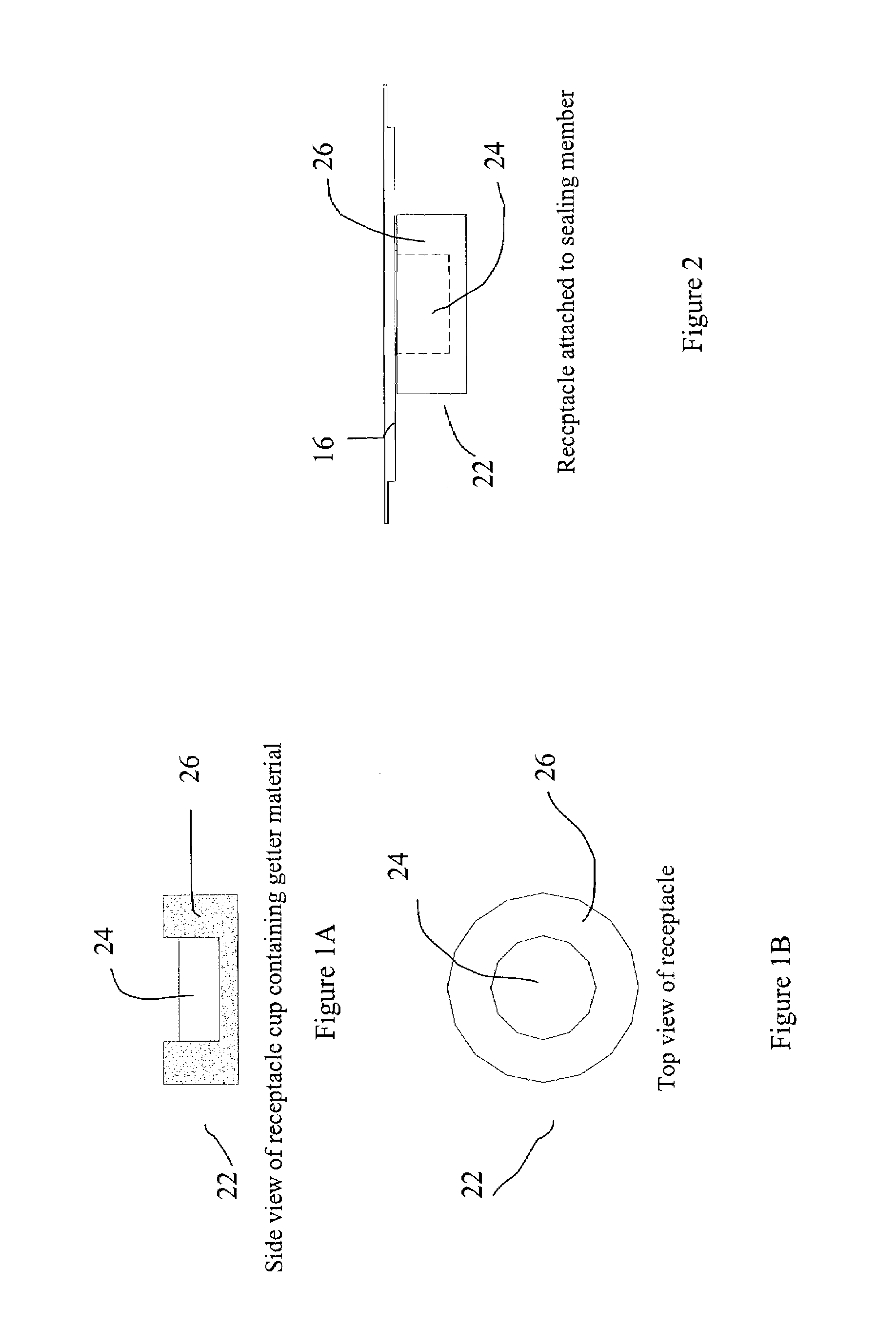System and method for gettering gas-phase contaminants within a sealed enclosure
a technology of sealed enclosure and gas-phase contaminants, which is applied in the direction of dispersed particle separation, chemistry apparatus and processes, separation processes, etc., can solve the problems of reliability, damage, and reduction of device life, and the atmosphere dew point to exceed,
- Summary
- Abstract
- Description
- Claims
- Application Information
AI Technical Summary
Benefits of technology
Problems solved by technology
Method used
Image
Examples
experimental examples
Theoretical and Experimental Examples
[0041]The gettering capacity required for a given package or other enclosure into which gas-phase contaminants may diffuse or leak may be estimated based on the outgassing properties of the components and devices being housed within the package in addition to an estimate of the quantity of evolved H2O from the H2 outgassing from the package material. Table I shows the calculated capacity required for a getter assembly used in various packages. It can be seen that the reduction in package volume requires that the proportion of that volume taken up by the getter assembly increases due to the effective increase in ppmv of hydrogen (H2) desorbed by the package walls for a ferrous material. Even if that ferrous package is replaced by some other non-hydrogen desorbing material one or more other factors may account for potential sources of contaminant, such as, for example, an increased leak-rate at the package seal. Clearly, this may be an issue for pl...
PUM
| Property | Measurement | Unit |
|---|---|---|
| pore size | aaaaa | aaaaa |
| temperatures | aaaaa | aaaaa |
| temperature | aaaaa | aaaaa |
Abstract
Description
Claims
Application Information
 Login to View More
Login to View More - R&D
- Intellectual Property
- Life Sciences
- Materials
- Tech Scout
- Unparalleled Data Quality
- Higher Quality Content
- 60% Fewer Hallucinations
Browse by: Latest US Patents, China's latest patents, Technical Efficacy Thesaurus, Application Domain, Technology Topic, Popular Technical Reports.
© 2025 PatSnap. All rights reserved.Legal|Privacy policy|Modern Slavery Act Transparency Statement|Sitemap|About US| Contact US: help@patsnap.com



